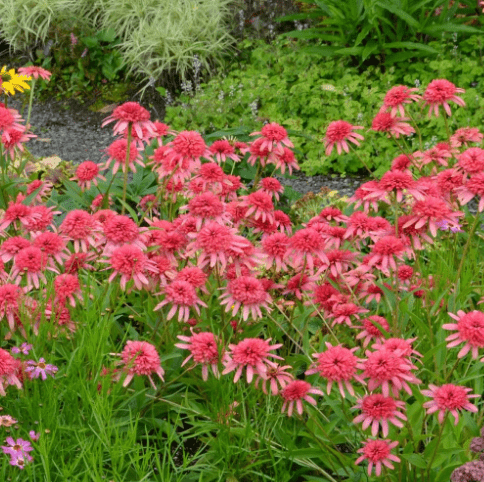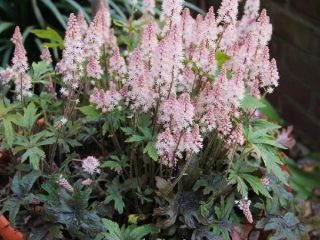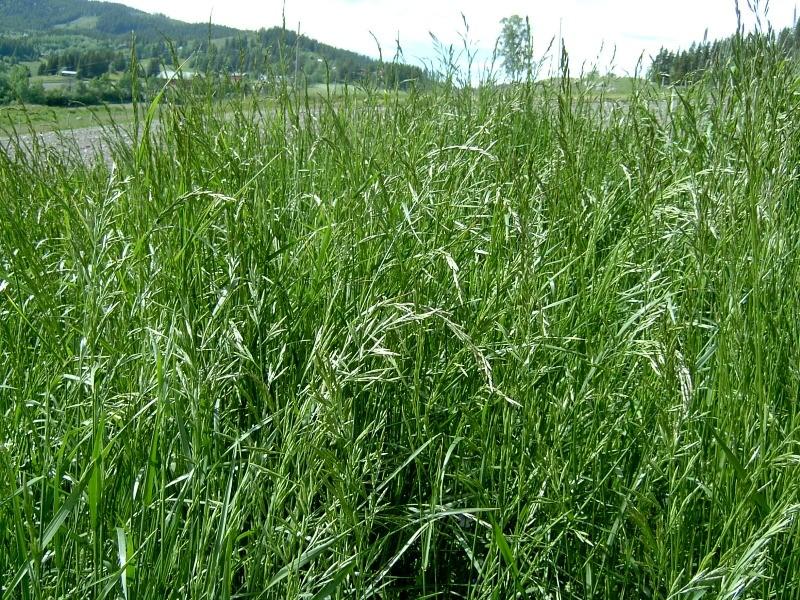Content
Echinacea blooms with large flowers from July to September for about two months. The genus of perennials consists of several species: red, white and purple-pink classic colors. However, in recent decades, breeders have developed many varieties and hybrids of Echinacea, represented by a lemon, scarlet-red, cream and variegated palette.

Modern varieties of echinacea look interesting on their own and help diversify the collection of perennials in the garden
Description of the perennial flower Echinacea with photo
In the mid-17th century, the beautiful Echinacea (lat. Echinacea) moved from North America to Russian gardens. Due to the special structure of the receptacle, which is flat at the beginning of flowering and then becomes spherical, Americans call it “purple coneflower,” which can mean “purple cone flower.”
Echinacea has straight, tall and rough stems ranging from 60 cm to 1 m in height, surrounded by wide oval dark green leaves. At their tops there are large single inflorescences-baskets with a diameter of 10-12 cm. They consist of smooth and graceful petals.

For all its proud appearance, Echinacea is quite unpretentious due to its frost and drought resistance.
Where does Echinacea grow in Russia?
Echinacea is popular in Russia, where it grows naturally in fields, meadows and light forest edges. The plant develops correctly and shows its decorative properties in the middle zone and southern regions. In the northern regions, it suffers from a lack of light and heat, and in severe frosts it freezes completely.
To ensure a comfortable existence of echinacea, you need to choose the brightest place in the garden for planting. The soil should be dry, well cultivated, drained and rich in humus. It is advisable to add a little lime before digging the area.

The plant is thermophilic and loves the sun.
Flowering period
In the world of floriculture, Echinacea has become famous for its large flowers of various colors. Throughout the summer it pleases the eye with colorful blooms. The first buds begin to open in early June, and the last ones - closer to September.
To extend the flowering period and maintain the plant in well-groomed condition, you need to systematically remove faded flowers. In addition, its duration is affected by light and temperature conditions. With enough sun, Echinacea blooms continuously. In less favorable conditions, the flowering period is shortened. When sown early in February-March, any type of echinacea blooms in the first year.

Flowering is one of the main moments in the life of Echinacea.
Types and best varieties of Echinacea
In total there are about 10 species of Echinacea. All of them belong to perennial rhizomatous herbaceous plants, but at the same time they have unique characteristics. Based on most representatives of the species, selection has brought out new beautiful varieties.
Narrow-leaved
Echinacea angustifolia is a perennial that is most commonly found in gardens. The plant does not require specific care and grows well in sunny flower beds.
The leaves of this plant are densely pubescent, narrowly lanceolate. Collected in a basal rosette. Inflorescences are in the form of baskets with a diameter of 10 to 12 cm. The color of the reed petals is purple-pink, the tubular petals are red-brown. The flowering period is from June to September.
This species prefers nutritious and moist soil. It responds well to mineral fertilizers and does not disdain organic matter.
A peculiarity of growing Echinacea angustifolia is the timely removal of wilted inflorescences. This stimulates the appearance of new flowers.

The plant looks impressive in flowering groups
Pale
Echinacea pallida (Echinacea pallida) is an excellent ornamental plant 45-50 cm high. The convex central core is surrounded by delicate graceful pale pink petals. In addition to beautiful inflorescences 8-10 cm in diameter, the plant has thin and long leaves.
The flowering period is early and long. The first buds open in May, and the last ones in November.Echinacea flowers emit a light sweet aroma.
April-May is considered a favorable time for sowing seeds of this species. The soil should be well drained and fertile. The best place for Echinacea pallidum is bright, although it grows well in partial shade.

Pale species of echinacea looks great combined with wildflowers
Purple
Echinacea purpurea is also a medicinal plant. Roots and grass contain:
- resins;
- essential and fatty oils;
- carbohydrates;
- phytosterols and other substances.
Dietary supplements are produced based on plants of this species. In addition, Echinacea purpurea is used in homeopathy.
The perennial forms straight and compact bushes up to 1.2 meters high. The leaves are large, elongated and rigid, collected in a basal rosette. The inflorescences of the species grow on the tops of peduncles and from the axils of leaves.

The purple type of echinacea blooms for a long time - from July to October.
Strange
Echinacea strange (Echinacea paradoxa) is an extremely light-loving plant. It grows well and correctly in open sunny areas. This variety is completely undemanding to the mechanical composition of the soil. But sandy soils are not suitable for growing it.
She loves watering and at the same time is resistant to short-term drought. The species calmly tolerates mild frosts under a layer of mulch and snow.

The strange coneflower bush grows up to 80 cm in height
Tennessee
The long-flowering perennial Tennessee coneflower belongs to the Asteraceae family. Attracts attention with thin, even petals of dark pink color and a large dark center. The buds, like many species, open in July.The plant is undemanding to soil and climatic conditions, so it is often found in gardens in the middle zone.

The Tennessee species is used in breeding to obtain new varieties
Sunset
Sunset is a variety of Echinacea purpurea. It is famous for its fragrant and large salmon-orange flowers. The flowering of the species begins in mid-summer and continues until early autumn. Echinacea is combined with phlox and daisies, suitable for decorating a garden in a simple Russian style.

Landscape designers recommend the Sunset variety for arranging lawns and mixborders
Dark red
This variety has many similarities with other species. But the color of the inflorescences cannot be compared with any of them. The dark red flower heads of the species, up to 15 cm in diameter, combine effectively with large green leaves.

Dark red coneflower (E. atrorubens Nutt.) is very often used in ornamental gardening
Other types
Among other varieties of echinacea, such as double and low-growing are widely popular. The first captivates with its lush buds, and the second with its compact size. They bloom vigorously, last a long time and combine perfectly in group plantings with other crops.
Varieties of terry echinacea with photo:
- Secret Passion;
The Secret Passion variety will become a real highlight of the garden
- Double Scoop Cranberry (Double Scoop Cranberry);
The Double Scoop Cranberry variety will allow you to admire cranberry-red flowers until autumn
- Supreme Flamingo (Suprim Flamingo);
The Supreme Flamingo variety looks great in bouquets in combination with ornamental grasses
- Supreme Cantaloupe (Suprim Cantaloupe);
The Supreme Cantaloupe variety has a bright personality due to its large petals of soft apricot color.
- Meteor Red (Meteor Red).
The Meteor Red variety is grown in open spaces; it is undemanding to soil
Varieties of low-growing echinacea with photos:
- Raspberry Truffle (Raspberry Trafl);
Raspberry Trafle variety is resistant to sun fading
- Lilliput (Lilliput);
The Liliput variety is suitable for true fans of compact plants
- Pixie Meadowbrite (Pixie Meadowbrite);
The Pixie Honeybright variety will help create a delicate flower meadow in the garden
- Kim's Knee High;
The Kimz Ni High variety will become a bold accent in the flower garden
- Virgin (Virgin);
Virgin looks unusually gentle in her ensemble, reminiscent of rural open spaces and serenity
- Piccolino (Piccolino);
Echinacea Piccolino will not take up much space in the garden
- Raspberry Tart.
Miniature Rosebery Tart bushes are perfect for the foreground of a flower garden.
Interesting facts about Echinacea
Some interesting facts about Echinacea:
- The leaves of this plant secrete a special substance, echinacin, which effectively heals wounds.
- Echinacea purpurea is widely used in the production of drugs that stimulate the immune system.
- The name of the plant comes from the Greek word "echinos", which means "blackberry" or "hedgehog". This is fully explained by the leaves of the plant, which resemble needles.
- Since ancient times, native North Americans have used Eichnacea to treat various painful conditions.
- Despite the variety of species, the most popular are purple and pale.
- Many hybrids are thermophilic, but can withstand light frosts and adapt to different environmental conditions.

Echinacea is considered an excellent honey plant, attracting butterflies, bees and bumblebees to the garden for pollinating other crops
Conclusion
From June until late autumn, Echinacea blooms with large, numerous inflorescences.It is beautiful in its grace and benefits people and the environment. Echinacea will complement any flower garden, and is also unpretentious and can be suitable for beginning gardeners.




















